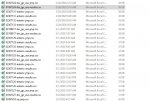First post but really need help. We are doing COVID research and obtain a lot of information back from our testing customers. We obtain a folder that contains lots of data and upwards of 1000 .csv files. The files that I am interested in are all named *results.csv There are other files in the folder but I can ignore those.
I need to open each file that ends in *results.csv and look in column B between rows B210-B260 for the term No Call.
If the term No Call is present in any one of those cells then I need to take the data in row B6, G6, D6, F7, L7, R7, F6 and copy it to a master workbook and then move to the next *results.csv workbook and do the same thing and save the same data if No Call is present. If No Call is not present I can close the workbook and move to the next *results.csv file.
I can attach file examples if necessary. Right now we are manually searching and entering this data and it is taking days to complete. My company has not deemed this a priority so I am trying to automate it if I can and using VBA seems like the solution but I am a total beginner.
Any help is appreciated.
I need to open each file that ends in *results.csv and look in column B between rows B210-B260 for the term No Call.
If the term No Call is present in any one of those cells then I need to take the data in row B6, G6, D6, F7, L7, R7, F6 and copy it to a master workbook and then move to the next *results.csv workbook and do the same thing and save the same data if No Call is present. If No Call is not present I can close the workbook and move to the next *results.csv file.
I can attach file examples if necessary. Right now we are manually searching and entering this data and it is taking days to complete. My company has not deemed this a priority so I am trying to automate it if I can and using VBA seems like the solution but I am a total beginner.
Any help is appreciated.







